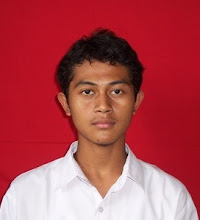As international governing bodies of futsal, FIFA and AMF are responsible for maintaining and promulgating the official rules of their respective versions of futsal. Like football, futsal has 'laws' that define all aspects of the game, including what may be changed to suit local competitions and leagues.
The first rule of futsal is no contact with the hand below the elbow unless it's the goal keeper, but he can only touch the ball with his hands when he is inside his team area.
The origin of Futsal can be traced back to Montevideo, Uruguay where in 1930 Juan Carlos Ceriani devised a five-a–side ball kicking game with adjusted size goals for youth competition in YMCAs. The game is played on handball-sized courts (40 x 20 meters), both indoors and outdoors, without the use of sidewalls.[3]
The international governing body FIFUSA (Federación Internacional de Fútbol de Salón, International Futsal Federation) was created in 1971 to administer the game, and held its first futsal world championship in São Paulo in 1982. Due to an apparent dispute with FIFA over the administration of fútbol, FIFUSA coined the word fut-sal in 1985.
FIFA soon began to administer its own indoor football games, creating its own version of the rules and hosting its first FIFA Indoor Soccer World Championship in 1989 in Rotterdam, Netherlands, in 1992 it was the FIFA Five-a-Side World Championship (Hong Kong) and since 1996 it has been called the FIFA Futsal World Championship (Guatemala). One of the most remarkable changes was the reduction of the ball weight and increase in ball size (from a handball size to a football size 4), which enabled faster play and, for the first time, scoring goals with the head (though this is still difficult and uncommon).
In 2004, members of PANAFUTSAL (La Confederación Panamericana de Futsal, The Pan-American Futsal Confederation) formed AMF (Asociación Mundial de Fútbol de Salón, World Futsal Association), an international futsal governing body independent of FIFA. Both FIFA and AMF continue to administer the game.
Some professional players start out with futsal to build fundamental skills. Brazilian players Ronaldinho, Robinho, Ronaldo, Rivaldo, Marcelo, Juninho and many more started out playing futsal. In Brazil, the majority of children start out with Futsal rather than association football since it requires less space and many schools in the country do not have a field to play traditional association football. There are also some notable players like Falcão who continue to play futsal at the club level.
Futsal is an indoor version of association football. Its name is derived from the Portuguese futebol de salão and the Spanish fútbol sala/de salón, which can be translated as 'indoor football'. In Madrid 1985 the name fútbol de salón and all other names the game was called were changed officially and internationally into FUTSAL.
Futsal is played between two teams of five players, one of whom is the goalkeeper, and up to seven substitutes per team. Unlike some other forms of indoor football, the game is played on a hard court surface delimited by lines; walls or boards are not used. Futsal is also played with a smaller ball with less bounce than a regulation football.[1] The rules create an emphasis on improvisation, creativity and technique as well as ball control and passing in small spaces.[2]
Other forms of indoor football games, which are played by somewhat different rules, exist and may be referred to as indoor football, five-a-side football or indoor soccer. Many of these codes predate FIFA's adoption and endorsement of futsal rules; the American indoor soccer variant, with a regulation-sized ball, larger artificial turf-covered court, and walls off which the ball may be rebounded, has sustained professional leagues in that country for over thirty years.

